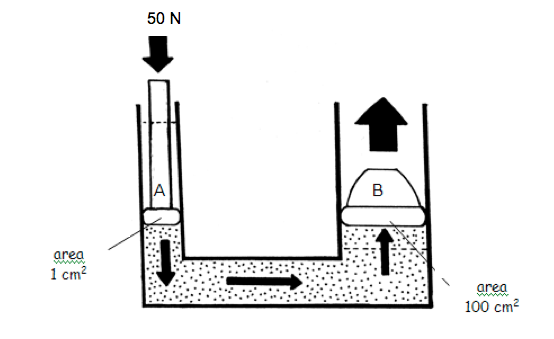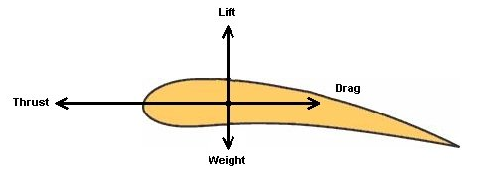Pressure Quiz: Ultimate Questions!
(461).jpg)
.
- 1.
Which of the following is the definition of pressure?
- A.
Pressure is the force acting on an object in a downwards direction.
- B.
Pressure is the force per unit area applied in a direction parallel to the surface.
- C.
Pressure is the force per unit area applied in a direction perpendicular to the surface.
- D.
Pressure is the force per unit volume applied in a direction perpendicular to the surface.
Correct Answer
C. Pressure is the force per unit area applied in a direction perpendicular to the surface.Explanation
The definition of pressure is the force per unit area applied in a direction perpendicular to the surface. This means that pressure is the amount of force exerted on a given area. The force is applied in a direction that is perpendicular, or at a right angle, to the surface. This definition is important in understanding how pressure is measured and how it affects objects and substances.Rate this question:
-
- 2.
Which of the following is the unit for Pressure? I. Pa II. Nm III. N/m2
- A.
I only
- B.
III only
- C.
I and III only
- D.
II and III only
Correct Answer
C. I and III onlyExplanation
The unit for pressure is measured in pascals (Pa) and newtons per square meter (N/m2). Both options I and III correctly represent the unit for pressure, making the answer "I and III only". Option II, Nm, is not the correct unit for pressure as it represents a different physical quantity, specifically torque.Rate this question:
-
- 3.
The figure below shows a box of mass 2 kg. What is the weight of the box on Earth?
- A.
0.2 N
- B.
2 N
- C.
20 N
- D.
200 N
Correct Answer
C. 20 NExplanation
The weight of an object is the force exerted on it due to gravity. On Earth, the acceleration due to gravity is approximately 9.8 m/s^2. The weight of an object can be calculated by multiplying its mass by the acceleration due to gravity. In this case, the box has a mass of 2 kg, so its weight would be 2 kg * 9.8 m/s^2 = 19.6 N. Since the answer choices are given in whole numbers, the closest option is 20 N.Rate this question:
-
- 4.
What is the minimum pressure that the box in Q3 can exert on the floor?
- A.
26.7 Pa
- B.
267 Pa
- C.
667 Pa
- D.
2220 Pa
Correct Answer
B. 267 PaExplanation
Since P = F/A, to obtain minimum pressure, the area must be maximum.Rate this question:
-
- 5.
What is the maximum pressure that the box in Q3 can exert on the floor?
- A.
26.7 Pa
- B.
267 Pa
- C.
667 Pa
- D.
2220 Pa
Correct Answer
D. 2220 PaExplanation
Since P = F/A, to obtain maximum pressure, the area must be minimum.Rate this question:
-
- 6.
The diagram below shows a simple hydraulic system[1] use to lift up a load. Given that the area of piston A is 1 cm2 (0.0001 m2), calculate the pressure exerted on piston A. [1] Uploader, S.Calculating the mechanical advantage of a hydraulic system, Connexions Web site. http://cnx.org/content/m31723/1.1/, Aug 27, 2009.
- A.
50 Pa
- B.
500 Pa
- C.
5000 Pa
- D.
500000 Pa
Correct Answer
D. 500000 PaExplanation
P = 50 / 0.0001 = 500000 PaRate this question:
-
- 7.
Since liquid cannot be compressed, the pressure exerted on piston A will be transmitted to piston B. What is the load that can be lifted up at piston B?
- A.
0.5 N
- B.
50 N
- C.
500 N
- D.
5000 N
Correct Answer
D. 5000 NExplanation
500000 = F / 0.01
F = 5000 NRate this question:
-
- 8.
Which of the following statements is correct?
- A.
In the design of a dam, the thickness of the wall is the same as the pressure of water remains the same.
- B.
In the design of a dam, the wall at the bottom of the dam is thicker as the pressure of water increases with depth.
- C.
In the design of a dam, the wall at the bottom of the dam is thinner as the pressure of water decreases with depth.
- D.
In the design of a dam, the wall at the middle of the dam is thicker as the pressure of water is highest in the middle.
Correct Answer
B. In the design of a dam, the wall at the bottom of the dam is thicker as the pressure of water increases with depth.Explanation
Pressure of water increases with depth of water. So the dam has to be thicker at the bottom to withstand the higher pressure.Rate this question:
-
- 9.
The image shows a cross-sectional view of an air foil moving through air. Which of the following statements is correct?
- A.
The speed of the air moving at the upper surface of the air foil is less than the speed of the air moving at the lower surface of the air foil.
- B.
The speed of the air moving at the upper surface of the air foil is more than the speed of the air moving at the lower surface of the air foil.
- C.
The speed of the air moving at the upper surface of the air foil is the same as the speed of the air moving at the lower surface of the air foil.
- D.
There is not sufficient information to make a conclusion.
Correct Answer
B. The speed of the air moving at the upper surface of the air foil is more than the speed of the air moving at the lower surface of the air foil.Explanation
Since the lift is upwards, the pressure a the lower surface of the airfoil must be more than that at the upper surface. Hence, the speed of the air on the upper surface of the foil must be higher.Rate this question:
-
- 10.
The image shows a cross-sectional view of an airfoil moving through air. Which of the following statements describe the motion of the air foil in the vertical direction.
- A.
The air foil is moving downwards with increasing speed.
- B.
The air foil is moving upwards at a constant speed.
- C.
The air foil is moving upwards with decreasing speed.
- D.
The air foil is moving upwards with increasing speed.
Correct Answer
D. The air foil is moving upwards with increasing speed.Explanation
Since the lift is more than the weight (size of arrows), there is a net force upwards, so the airfoil must be either moving upwards with increasing speed or moving downwards with decreasing speed.Rate this question:
-
Quiz Review Timeline +
Our quizzes are rigorously reviewed, monitored and continuously updated by our expert board to maintain accuracy, relevance, and timeliness.
-
Current Version
-
Apr 20, 2023Quiz Edited by
ProProfs Editorial Team -
Aug 06, 2010Quiz Created by
Kinchuah



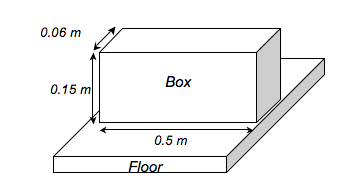
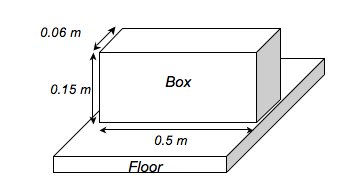
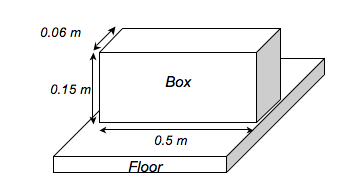
![The diagram below shows a simple hydraulic
system[1]
use to lift up a load.
Given that the area of piston A is 1 cm2
(0.0001 m2), calculate the pressure exerted on piston A.
[1]
Uploader, S.Calculating the mechanical
advantage of a hydraulic system, Connexions Web site.
http://cnx.org/content/m31723/1.1/, Aug 27, 2009.
The diagram below shows a simple hydraulic
system[1]
use to lift up a load.
Given that the area of piston A is 1 cm2
(0.0001 m2), calculate the pressure exerted on piston A.
[1]
Uploader, S.Calculating the mechanical
advantage of a hydraulic system, Connexions Web site.
http://cnx.org/content/m31723/1.1/, Aug 27, 2009.
- ProProfs](https://www.proprofs.com/quiz-school/upload/yuiupload/1604342646.jpg)
